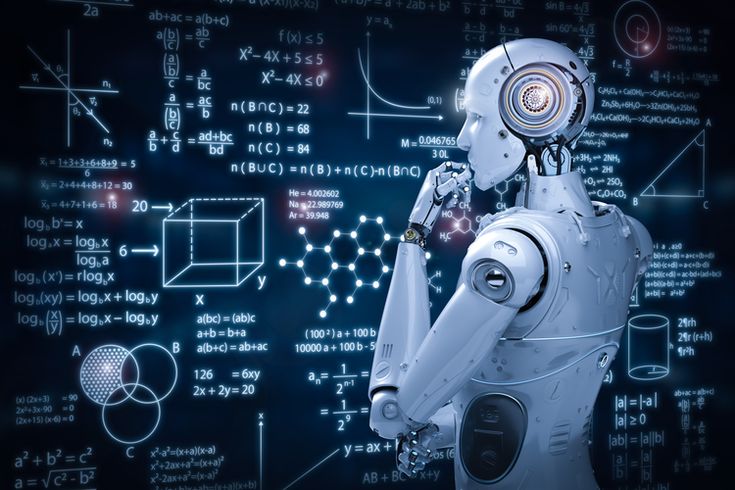1. Introduction
Reinforcement Learning (RL) has emerged as a significant approach within the field of machine learning, enabling systems to learn optimal behaviors through interactions with their environment. In robotics, this paradigm has become crucial, allowing robots to autonomously learn tasks without needing explicit programming for every scenario. This article explores the diverse applications of reinforcement learning in robotics, showcasing its transformative impact across various domains.
2. Basics of Reinforcement Learning in Robotics
2.1. Key Concepts
At its core, reinforcement learning involves an agent that interacts with an environment. Key components include:
- Agent: The robot or system making decisions.
- Environment: The world or context in which the agent operates.
- Actions: The choices available to the agent.
- States: The current situation of the agent within the environment.
- Rewards: Feedback received based on the actions taken.
2.2. The RL Learning Process
Reinforcement learning operates on the principle of trial and error. The agent learns to optimize its actions to maximize cumulative rewards through repeated interactions, gradually refining its strategy based on past experiences.
2.3. Exploration vs. Exploitation in Robotics
A critical aspect of RL is balancing exploration (trying new actions) with exploitation (using known successful actions). Robots must effectively navigate this trade-off to improve performance over time.

3. Application Areas of Reinforcement Learning in Robotics
3.1. Robot Navigation and Path Planning
Reinforcement learning enables robots to navigate complex environments by learning optimal paths. For example, robots can efficiently traverse obstacle-laden spaces using RL algorithms to determine the best routes based on real-time feedback.
3.2. Robotic Manipulation
In robotic manipulation tasks, RL is applied to enable robots to perform pick-and-place operations, handle objects, and assemble components. Through RL, robots can learn the nuances of manipulating various objects, adapting their strategies based on feedback from their actions.
3.3. Autonomous Vehicles
Reinforcement learning plays a pivotal role in the development of autonomous vehicles. RL algorithms help vehicles make real-time decisions, from navigation to obstacle avoidance, enhancing safety and efficiency on the roads.
3.4. Robot Learning from Demonstration (LfD)
Robots can learn tasks by observing human demonstrations, a process enhanced by reinforcement learning. This allows robots to generalize learned behaviors to new situations, making them more adaptable and efficient in real-world scenarios.
3.5. Multi-Robot Coordination
Reinforcement learning is instrumental in coordinating multiple robots for collaborative tasks. In swarm robotics, RL facilitates effective communication and cooperation among robots, improving overall system performance.
4. Case Studies
4.1. Reinforcement Learning in Humanoid Robots
Humanoid robots like Atlas and Honda’s ASIMO have successfully implemented RL to learn complex tasks such as walking, running, and jumping. These robots adapt their movements based on environmental feedback, showcasing the potential of RL in robotics.
4.2. Applications in Industrial Robotics
In industrial settings, reinforcement learning enhances the adaptability of robots to varying tasks, such as assembly line operations. Companies have reported increased efficiency and flexibility in production processes through RL-enabled robots.
4.3. RL in Drones and Aerial Robotics
Reinforcement learning has been used in drone navigation, enabling autonomous flight in dynamic environments. For instance, RL helps drones learn optimal flight paths, manage obstacles, and adjust to changing weather conditions.

5. Challenges and Limitations
5.1. Sample Efficiency
One of the primary challenges in reinforcement learning is sample efficiency, as training agents often requires vast amounts of data, which may be impractical in real-world scenarios.
5.2. Real-World Complexity
Real-world environments can be highly complex and dynamic, presenting challenges for RL algorithms that may not generalize well outside of controlled settings.
5.3. Safety and Reliability
Ensuring the safety and reliability of RL-based robotic systems is critical, especially in applications involving human interaction or life-threatening scenarios. Continuous improvements in safety measures are necessary.
6. Future Directions
6.1. Advancements in RL Algorithms
Emerging trends in RL, such as hierarchical reinforcement learning and meta-learning, promise to enhance the efficiency and robustness of robotic systems.
6.2. Integration with Other Technologies
Combining reinforcement learning with technologies like computer vision and natural language processing can lead to more intelligent and capable robotic systems, improving their adaptability and performance.
6.3. Potential Impact on Industry and Society
As reinforcement learning continues to evolve, its integration into robotics is likely to revolutionize various sectors, from healthcare and agriculture to logistics and manufacturing.
7. Conclusion
Reinforcement learning is transforming the field of robotics, enabling machines to learn from experience and adapt to complex environments. From navigation and manipulation to autonomous vehicles and multi-robot systems, RL applications are vast and impactful. As research and development continue, the potential for RL in robotics will only expand, paving the way for more intelligent and capable robotic systems in the future.
FAQs about Applications of Reinforcement Learning in Robotics
1. What is reinforcement learning in the context of robotics?
- Reinforcement learning is a machine learning paradigm where robots learn to make decisions by interacting with their environment and receiving feedback in the form of rewards or penalties based on their actions.
2. How does reinforcement learning improve robotic performance?
- By enabling robots to learn from experience, reinforcement learning helps them adapt to changing environments and optimize their actions for better performance over time.
3. What are some common applications of reinforcement learning in robotics?
- Common applications include robot navigation, robotic manipulation, autonomous vehicles, learning from demonstration, and multi-robot coordination.
4. What challenges do researchers face when implementing reinforcement learning in robotics?
- Key challenges include sample efficiency, real-world complexity, safety, and ensuring reliable performance in dynamic environments.
5. How do robots learn tasks from human demonstrations?
- Robots use techniques like Learning from Demonstration (LfD) combined with reinforcement learning, allowing them to generalize learned behaviors to new situations by observing and imitating human actions.
6. Can reinforcement learning be applied to collaborative robots?
- Yes, reinforcement learning can facilitate coordination among multiple robots, allowing them to work together effectively on shared tasks in applications like swarm robotics.
7. What are the potential future directions for reinforcement learning in robotics?
- Future directions may include advancements in RL algorithms, better integration with technologies like computer vision, and applications in new fields such as healthcare and smart manufacturing.
8. What role does safety play in reinforcement learning for robotics?
- Safety is critical in reinforcement learning applications, especially when robots operate in environments with humans. Continuous efforts are necessary to develop safe RL methodologies.
9. What programming languages and frameworks are commonly used for RL in robotics?
- Python is the most popular language, with frameworks like TensorFlow, PyTorch, and OpenAI Gym often used for developing and testing RL algorithms.
10. How can I get started with reinforcement learning in robotics?
- Begin by studying foundational concepts in machine learning and reinforcement learning, followed by hands-on experimentation with simulation environments and existing RL libraries.
Tips for Understanding and Implementing Reinforcement Learning in Robotics
- Build a Strong Foundation: Ensure you have a solid grasp of basic concepts in reinforcement learning and robotics before diving into more complex applications.
- Experiment with Simulated Environments: Use platforms like OpenAI Gym or Unity for training RL algorithms in simulated environments, allowing for safe and controlled experimentation.
- Start Small: Begin with simple robotic tasks and gradually increase complexity as you gain confidence and understanding of reinforcement learning techniques.
- Monitor Progress: Keep track of key performance metrics during training to understand the effectiveness of your reinforcement learning algorithms.
- Utilize Existing Frameworks: Take advantage of established RL libraries and frameworks to save time and leverage pre-built functionalities.
- Engage with the Community: Join online forums, discussion groups, or social media communities focused on RL and robotics to exchange knowledge and gain insights from experienced practitioners.
- Read Research Papers: Stay informed about the latest advancements in reinforcement learning by reading research papers and articles, which can deepen your understanding of state-of-the-art techniques.
- Implement Incrementally: Start with basic RL models and gradually add complexity, exploring different algorithms and techniques as you progress.
- Work on Real Projects: Apply your knowledge to real-world projects or personal interests to gain practical experience and reinforce your learning.
- Stay Curious and Open-Minded: The field of reinforcement learning in robotics is rapidly evolving. Stay curious, explore new ideas, and be open to learning from various sources.